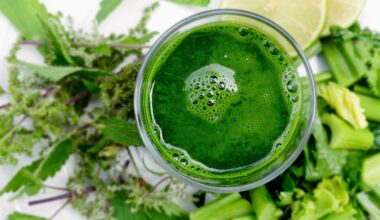Key Metrics in Body Composition: Fat Mass, Muscle Mass, and More
Understanding body composition is essential for assessing health and fitness. Body composition refers to the proportion of fat and non-fat mass in the body. It is vital to obtain a comprehensive analysis as it provides insight into an individual’s overall health. There are various methods to assess body composition, such as skinfold measurements, bioelectrical impedance, and dual-energy X-ray absorptiometry (DEXA). Each method has its own advantages and limitations. Fat mass is a crucial component; it includes both essential fat necessary for life and storage fat that serves as energy reserves. Muscle mass, representing lean body mass, is crucial for metabolism, physical performance, and overall strength. Muscle is more metabolically active than fat, making it vital to maintain a healthy balance between fat and lean mass. Moreover, knowing your body composition helps tailor nutrition and exercise programs effectively. Different activities can have a significant impact on muscle and fat percentages. Understanding how to interpret body composition results can guide lifestyle changes that enhance an individual’s health and fitness journeys. It allows for targeted interventions based on personal goals.
Fat Mass and Its Importance
Fat mass plays a significant role in overall health status. Excess fat mass can lead to various health issues, including cardiovascular diseases, diabetes, and obesity-related conditions. Assessing body fat percentage helps determine these health risks accurately. It is essential to distinguish between essential fat—needed for vital physiological functions—and excess fat, which can lead to health complications. Essential fat is critical for maintaining core body temperature, protecting vital organs, and aiding in the hormonal function. Activities like resistance training can help increase muscle mass while simultaneously reducing excess fat. Personalized nutrition plans focusing on healthy fats can support this. Body composition analysis offers valuable insights to individuals wanting to reach a healthy fat mass percentage. Tools such as calipers or body composition scales are readily available for consumers. Understanding how various dietary changes influence fat mass is crucial. Similarly, engaging in regular physical activities helps to maintain a healthy fat-to-lean mass ratio, benefiting long-term wellness. Tracking progress over time is essential to staying motivated and making necessary adjustments in diets and exercise regimes.
Muscle mass is another critical metric in body composition analysis. Developed through resistance and strength training, muscle mass contributes significantly to overall metabolic health. A higher muscle mass means a higher resting metabolic rate, leading to greater calorie expenditure even at rest, which is beneficial for weight management. Resistance exercises, such as weight lifting and bodyweight workouts, promote muscle hypertrophy and are essential for maintaining muscle mass as we age. Older adults particularly benefit from increasing muscle mass, as it helps prevent sarcopenia, the loss of muscle mass associated with aging. Additionally, maintaining muscle mass enhances physical performance, agility, and balance, which are crucial for everyday tasks and activities. Nutritional factors, such as adequate protein intake, also play a vital role in muscle adaptation and growth. Consuming the right balance of macronutrients supports muscle recovery and enhances performance during workouts. Moreover, understanding the relationship between muscle and fat mass assists individuals in setting appropriate health and fitness goals. This balance is essential for achieving desired changes in body composition. Therefore, investing time in building and preserving muscle mass through proper exercise and diet is fundamental.
Visceral Fat vs. Subcutaneous Fat
Understanding the differences between visceral fat and subcutaneous fat is fundamental to body composition analysis. Visceral fat surrounds internal organs, while subcutaneous fat is located beneath the skin. Visceral fat poses a higher health risk, as it is linked to serious conditions, including heart disease, diabetes, and inflammation. In contrast, subcutaneous fat serves as an energy reserve and provides cushioning for the body. While some fat is essential for physiological functions, excess visceral fat can lead to a host of metabolic issues and impair bodily functions. Evaluating the ratio of visceral to subcutaneous fat can provide a clearer picture of an individual’s health risks. Reducing visceral fat is possible through a combination of dietary changes, regular physical activity, and stress management. High-intensity workouts are known to effectively decrease visceral fat levels. Moreover, understanding how different diets affect each type of fat can guide lifestyle changes aimed at improving body composition. Achieving a healthy balance of fat types can decrease the risk of developing chronic diseases and enhance overall health significantly.
Another key metric in body composition analysis is the body mass index (BMI). While simple and commonly used, BMI has its limitations as it does not differentiate between fat mass and muscle mass. Therefore, individuals with high muscle density may be classified as overweight or obese, which can be misleading. Instead, understanding body composition provides a more detailed view of an individual’s health status. Although BMI can serve as an initial screening tool, deeper assessments are required for accurate health evaluations. Individuals looking for a better assessment of body composition can consider alternative metrics, such as waist-to-hip ratio and body fat percentage. These measurements often correlate more directly with health risks. For instance, a higher waist-to-hip ratio is typically associated with an increased risk of cardiovascular diseases. Tracking changes in body composition over time rather than focusing solely on weight can lead to more effective health and fitness strategies. Body composition assessments can empower people to take charge of their health through informed choices and adaptations in diet and exercise.
Tools for Analyzing Body Composition
Various tools are available for assessing body composition, each varying in accuracy, cost, and convenience. Some of the most common methods include skinfold calipers, bioelectrical impedance analysis (BIA), and DEXA scans. Skinfold calipers are a cost-effective option for estimating body fat percentage by measuring skinfold thickness at specific sites. While this method requires training, it can be performed in gym settings by fitness professionals. Bioelectrical impedance analysis offers a non-invasive way to estimate body composition through measuring electrical currents as they travel through body tissues. However, hydration levels can significantly affect results, making accuracy a concern. DEXA scans are considered the gold standard for body composition analysis. They provide highly accurate information about bone density, fat mass, and lean body mass. However, these scans may not be accessible for everyday use. Understanding the advantages and limitations of each tool can help individuals select the most appropriate method for their monitoring. Regular assessments enable better tracking of changes over time, leading to tailored health and fitness outcomes.
Nutrition plays a vital role in body composition, influencing fat and muscle mass. A balanced diet rich in macronutrients, specifically proteins, carbohydrates, and healthy fats, supports overall body composition goals. For muscle growth, adequate protein intake is essential. Incorporating sources like lean meats, legumes, and dairy can help supply the necessary building blocks for muscle synthesis. On the other hand, controlling caloric intake helps manage fat mass effectively. Strategies such as portion control, meal timing, and selecting whole foods can enhance fat loss through creating a caloric deficit. Furthermore, tracking daily nutritional intake can provide insights into pattern recognition, helping adapt to changing fitness needs. Hydration is equally important, as water helps facilitate metabolic processes and aids recovery. Nutritional needs may vary based on factors such as age, gender, and activity level, so individualizing plans is critical. In conclusion, combining both exercise and nutrition knowledge can promote balanced body composition, leading to a healthier lifestyle. Individuals should continue to educate themselves on nutrition science to make informed food choices for optimal results.


